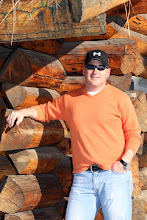We'll start this week a little late – it's been a day of travel, re-connection, and synergy with my partners in Leadership at Giant Impact. A great group with great hearts who's "Burled Arch" is to Impact the hearts and minds of leaders. The day is ending in Augusta, Georgia as I finalize preparations for tomorrow's session.
On my heart tonight and for this week is the next logical step from last week – meaning that, inevitably, at some of the checkpoint times when we 'E-valuate' we're going to fall short. There will be times when the path is difficult and we'll need to handle obstacles or the performance didn't deliver desired results and we'll process the failure.
Iditarod Leadership is written in Business Fiction or Business Parable style and is meant to convey business truths that I've learned over the years through events that occur as a business consultant is on an Alaskan adventure, where he learns to mush a team of dogs. He and fellow executives end their journey by competing in a 3 day race and one chapter deals with this topic of challenges, problems, and obstacles. To get us started for the week I thought I would throw in a teaser and give an excerpt from and exchange in the book between the main character (Michael) and his mushing guide (Joe):
The second day proved to be some of the most challenging of my life. Problems and personal adversity seem to be lurking around every corner. Sometimes I feel like it is trite to use the phrase, "what doesn't kill you only makes you stronger," and yet I'm finding myself using that to keep me moving forward.We went through over Gus Pass and down through Rondy Falls. Rondy Falls is a steep descent that has several drop downs. There could not have been a worse position to be running than last going through Rondy Falls. The other sleds in front of us – all with Novice mushers had proven to be brutal on the condition of the trail. The steep decent had caused everyone to stand on their brakes hard and caused ruts in the snow and ice that were 8 – 10" deep in places. On the last step down a hinge on my break came loose, throwing my right runner against the wall of the rut. My stomach twisted as I heard a crack.
As soon as was safe, I parked the team to look at the damage. My right runner was broken.
I felt like I was the guy on the side walk that had just been drenched by a car driving through a puddle as the snow started to alternate into a miserable freezing rain.
How do they do it? How do they make 1100 miles? I'm struggling after 2 days – they last 10 days over worse terrain.
Did I really expect this to be easy and sail through this without having challenges?
Did my early win exempt me from any of this?
Just as I was teetering on throwing in the towel, Joe stepped in.
"So what?"
"What do you mean so what?" I shot back.
"So what? – it's cold – it's hard – you broke a runner – so what?" Joe said as if it was insignificant. "You teach people about business, right? Aren't their problems in business"
"We have a saying out here that frustration comes from your expectations. If you expected to run a race and be problem free – you're going to be frustrated. This is how racing is – this is how life is – you face problems."
The question is more about our perspectives and our will to persevere and we'll unpack both this week.



